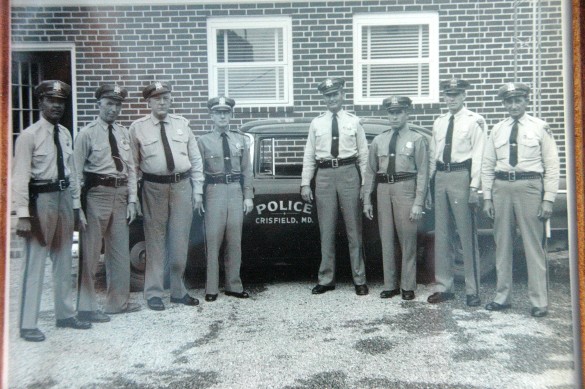
Delaware has a strong collection of old newspapers available for historical and genealogical research. These serials, including the city dailies in Wilmington and many weeklies in communities all over New Castle, Kent, and Sussex counties, provide an invaluable resource for those studying the past. But, too, there is a seldom-used collection of African-American newspapers published by and for the Black community in the First State.
The Wilmington Herald Times was one of those. Published every Friday in Wilmington in 1941 and 1942 by Eustace Gay, the weekly said it was “Delaware’s largest colored newspaper.” In 1942 it became an edition of the Philadelphia Tribune, although Editor Gay continued his local responsibilities, covering the Delaware beat.
The Delaware Reporter, published by J. Alexis DuBois, was another product. In the July 12, 1940, issue, it said it was “born today for the purpose of filling a long felt need, a newspaper in Wilmington and downstate that gives the essential news of the various activities of Colored people and their white friends . . . Heretofore the space given to Colored people’s activities by the out-of-town papers and the daily, has been lamentably meager. Too many of the interesting social, fraternal, religious, and political activities among the colored people of Delaware have remained unchronicled. So the Delaware reporter comes to you today for the first time to publish some of the important news that its publisher can gather.”
There are other briefly published titles on microfilm reel 619 at the University of Delaware, including the Delaware Abolitionist, published by the Delaware Anti-Slavery Society, and “devoted to Emancipation in Delaware, which circulated in 1848. The Advance, another Wilmington paper, was distributed around the turn-of-the-twentieth-century, the Delaware Spectator (1974-1975), Delaware Observer (1968) and the Front Page (1945) published by Eugene K. Ross,
Here are two examples of front-page news from the volumes. The issue before the Wilmington City Council in December 1941 was the employment of African-Americans as city firefighters. When the Board went on the record as favoring the appointment of African-American firefighters, the newspaper observed that the “startling pronouncement was a direct reversal of the former attitude.” Still, the city did say it might create a segregated firefighting unit. Hospital reform was the subject covered by the Delaware Reporter in July 1940 since the City lagged “far behind in its hospital provisions” for the African-American Community. Of course, there was plenty of social, personal, civic, and family news, which a researcher will find helpful.
The nation’s large cities, places such as nearby Baltimore and Philadelphia, had strong, long-running Black papers, providing unique coverage of interest to the community. And while those papers sometimes covered Delaware, these broadsheets were based here, chronicling the local story. Although their existence was brief, they are helpful products for understanding the past during the time they rolled off the printing press.
In the years subscribers received these titles, they provided a wealth of information as the editors and reporters worked to cover Delaware events of the day of interest to the Black community. In those old pages are political and social news, obituaries, letters to the editor, and fresh insights.
These newspapers are found at the University of Delaware and microfilm reel 619. If you need an African American newspaper from Delaware, check out these titles.








